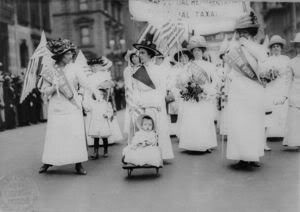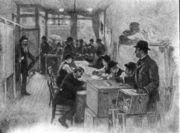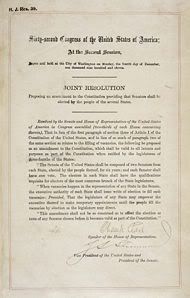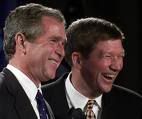(4 pm. – promoted by ek hornbeck)
Burning the Midnight Oil for Progressive Populism
 We in the US take the two party system for granted, but a two party system is not normal among advanced industrial countries. And, in our history, we used to have a lot more third parties with a lot more impact on our political system in the US. What happened?
We in the US take the two party system for granted, but a two party system is not normal among advanced industrial countries. And, in our history, we used to have a lot more third parties with a lot more impact on our political system in the US. What happened?
This diary is one of a series that was originally published as single, long, sprawling diary.
For most of its political history to the late 1800’s, the US was either dominated by one or two political parties. The (extra-constitutional) winner take all electoral college system and the winner take all nature of a state legislature selecting the state’s Senator strongly pushed in that direction.
But alongside this was a political institution that allowed third parties to emerge and compete for influence ~ and indeed, the Great Re-Alignment from the Democrats and the Whigs to the Republicans and the Democrats occured in part thanks to the existence of third parties that were available to merge with the Anti-Slavery Whigs once they had been purged from the Whig Party.
How did this system work, and where did it go?
How did the Fusion Ticket System Support 3rd Party Development?

From Spoiling for a Fight: Third-Party Politics in America, by Micah L. Sifry (New York: Routledge, 2002), Chapter 9:
Neither man [Daniel Cantor and Joel Rogers, founders of the New Party] wanted to repeat the failures of third-party experiments, but at the same time they both felt a real frustration with the limits of the two-party duopoly. And so they set out to revive an old political practice that had been prevalent in America since the dawn of the Republic until the 1890s: fusion. Also known as cross-endorsement, fusion had given minor parties a substantial role in winner-take-all elections all through the nineteenth century. Under this system, a candidate could be endorsed by more than one party, with the votes for that person counted separately under each party’s name and then tallied together. Rather than ask their supporters to “waste their votes” on candidates with little chance of winning, fusion allowed minor parties to maintain a separate existence while contributing to a major party candidate’s victory. But it existed because it served the needs of at least one of the major parties, who often initiated fusions to shore up a weak position vis-a-vis the other major party. According to historian Peter Argersinger,
“If fusion sometimes helped destroy individual third parties, it helped maintain a significant third party tradition by guaranteeing that dissenters’ votes could be more than symbolic protest, that their leaders could gain office, and that their demands might be heard. Most of the election victories normally attributed to the Grangers, Independents, or Greenbackers in the 1870s and 1880s were a result of fusion between those third party groups and Democrats. That some politicians regarded fusion as a mechanism for proportional representation is not surprising.”
Argesinger added that minor parties regularly “received at least 20 percent in one or more elections from 1874 to 1892 in more than half the southern states,” thanks to fusion. And between 1878 and 1892, they held the balance of power at least once in every state but Vermont, “culminating in 1892 when neither major party secured a majority of the electorate in nearly three-quarters of the states.”
The reason this could be used by the New Party is that New York is one of the eight states that never outlawed full fledged fusion tickets.
The Dynamics of Fusion Tickets
 Consider the “wasted vote” problem faced by a third party in the first past the post, single member district. Now, add the opportunity to run a major candidate on your ballot line if you wish.
Consider the “wasted vote” problem faced by a third party in the first past the post, single member district. Now, add the opportunity to run a major candidate on your ballot line if you wish.
The main action here in establishing a third party is in the races for the legislature, because the races for the legislature brings the two sides of fusion ticket influence into play, side by side.
Now, say the third party decides that a quarter of one of the major party candidates are “good enough to support”. And you are a strong believer in the principles represented by the 3rd party. That means that you can vote for one of those candidates if that happens to be your district, and you can refuse to support one of the others, if the supported candidates do not happen to be in your district, and neither vote is “wasted”.
The kind of careerist, self-serving unprincipled politicians that are selected for by the two major parties are obviously going to accept the fusion ticket offer if the offer is made. It individually helps them out. And the ones who do not receive an offer do not get a say.
And then, if there is any noticeable swing in vote in one election based on whether or not the candidate was on a fusion ticket, that is incentive for a candidate who expects a tight race, or who is the underdog, to seek out the selection by the third party. Now, that means that they have to accept some priorities of the third party ~ but the kind of careerist, self serving, unprincipled politicians selected for by the major parties will accept whatever principles are necessary to get elected.
Which means there are two impacts for the party members to see ~ those successes made possible due to voting on the third party line, and the swing in position of those major party candidates angling to be on the third party ballot line.
And of course, a politician who won due to the margin of votes in the third party ballot line knows that the third party can take that away as well.
Well, if it worked, why did it stop?
By the late 1800’s, Fusion tickets were working too well. There were Progressive, People’s, Granger, and a range of third parties having substantial impact in regions across the country. Going back to the above quote:
Argesinger added that minor parties regularly “received at least 20 percent in one or more elections from 1874 to 1892 in more than half the southern states,” thanks to fusion. And between 1878 and 1892, they held the balance of power at least once in every state but Vermont, “culminating in 1892 when neither major party secured a majority of the electorate in nearly three-quarters of the states.”
Unfortunately for third-party supporters, the fusion laws worked too well for the comfort of the major parties. Starting after the 1892 election, when the Populist “People’s Party” made extensive use of fusion with the Democrats, threatening to become a major party in its own right, Republican-dominated state legislatures moved to ban the practice. One Republican Minnesota state senator made clear exactly what his party was doing, saying, “We don’t propose to allow the Democrats to make allies of the Populists, Prohibitionists, or any other party, and get up combination tickets against us. We can whip them single-handed, but don’t intend to fight all creation.”
And now, as noted above, only eight states still allow full fledged fusion tickets. According to the Wikipedia machine, there are only eight states that allow full fusion tickets today: Connecticut, Delaware, Idaho, Mississippi, New York, Oregon, South Carolina, Vermont.
In other words, four northeastern states with 42 electoral votes, 2 Southeastern states with 15 electoral votes, one Mountain Western states with 4 electoral votes, and one West Coast state, with 7 electoral votes, for a total, if my back of the envelope reckoning is correct, of 68 electoral votes ~ 16 Senators and 52 Congressmen. 68/538 is 13%, so even a “major 3rd party” which somehow emerged with an average of 20% of the vote in each fusion state would hold roughly 3% of the Federal electoral power in the country.
But did it really go away?
Did the fusion ticket effect really go away? Or did it mutate?
In this question, what I have in mind as the mutant is the radical reactionary “Conservative Movement” which emerged in the post-WWII era ~ by which time the Fusion Ticket battle of the Republican War on Voting was largely won.
 The “Conservative Movement” had all the trappings of a 3rd party of the 1800’s. Its had its own dedicated groups of people hammering out policies, its dedicated groups of propagandists ~ partisan newspapers in the 1800’s, “think tanks” in the 20th ~ it had its dedicated ongoing fundraising activities ~ it had its conventions, though no candidates were nominated at them.
The “Conservative Movement” had all the trappings of a 3rd party of the 1800’s. Its had its own dedicated groups of people hammering out policies, its dedicated groups of propagandists ~ partisan newspapers in the 1800’s, “think tanks” in the 20th ~ it had its dedicated ongoing fundraising activities ~ it had its conventions, though no candidates were nominated at them.
However, except for some fringe 3rd party extremists too extreme for even the “Conservative Movement”, they did not have a ballot line. Instead, they cultivated and supported politicians to run as Republicans. With the Democrats dominated by Big Oil, Property Developers, Labor and other interests, the Republicans were representing a wide range of business interests that were the natural enemies of Labor, which ranged all over the map on social issues, stereotypically represented as the Taft Republicans and the Rockefeller Republicans.
And fast forward to the 1980’s, and its clear how effective this shadow fusion ticket party without its own candidates had been in recasting the Republican party in its own image, and progressively filtering out the Rockefeller Republican wing. Of course, it helped that the Texas oil field quotas had vanished by the 1970’s, and with it vanished the incentive of Big Oil to pursue full employment, so corporate Big Oil abandoned the Democratic Party and joined with the radical reactionary oil millionaires that were already helping to fund the Conservative Movement.
Conclusion: A Three Pronged Strategy in the War For Voting
One line of attack that this analysis suggests is to “do what they did”. Establish one or more shadow third parties, that have their independent foundation and support networks outside of the Democratic party, but act to tilt the scales in primary elections.
A second line of attack that this analysis suggests is to pursue Federal electoral reform as a head-on attack on the entrenched third party system. This is, of course, a long game rather than a short game, just as the successful fight to gain direct election of the Senate, and much work needs to be done to pinpoint which of several possible reforms have the best prospect for getting enacted by appealing to the short term political interests of enough political actors. This is, obviously, synergistic with the first line of attack, since the more effective the shadow third parties are, the more opportunities there are to introduce electoral reform into the national debate.
The third line of attack is at the state and local level. In particular, in “national wave” elections, it is possible for a political party to gain a position of power that they are not likely to hold in a regular two party fight in that locality or state. They are the party that has a local or state vested interest in electoral reform while they are in power. Indeed, since the War On Voting is most often implemented at a state level, they are the ones who can most directly reverse those previous victories.
A simple system to establish ballot position, such as average final position over the past eight years, and explicit permission for an individual candidate to appear on the ballot line for any party that gains access to the ballot, and fusion tickets can be restored. Although full preference voting would require a wrenching change of existing voting institutions, adding second preference voting is a straightforward reform which would immediately increase the third party first preference vote and increase the effective constituency of the voting reform.
The third line of attack is also synergistic with the establishment of shadow third parties, since it is vital in these kinds of fights to strike when the iron is hot. And granting people rights is something far less likely to excite an electoral backlash than stripping away people’s rights.
This is all, of course, a political long game: it will not yield major political returns in 2012 or 2014 … but it might start yielding some fruit by 2016, and even more by 2020. And if we never play the long game, we will always be rolled by radical reactionaries who do.
Midnight Oil ~ Power and the Passion

1 comments
Author
Well, there was a week off at school, and the implied drop in income, its not like the free time was going to go into shopping at the mall.